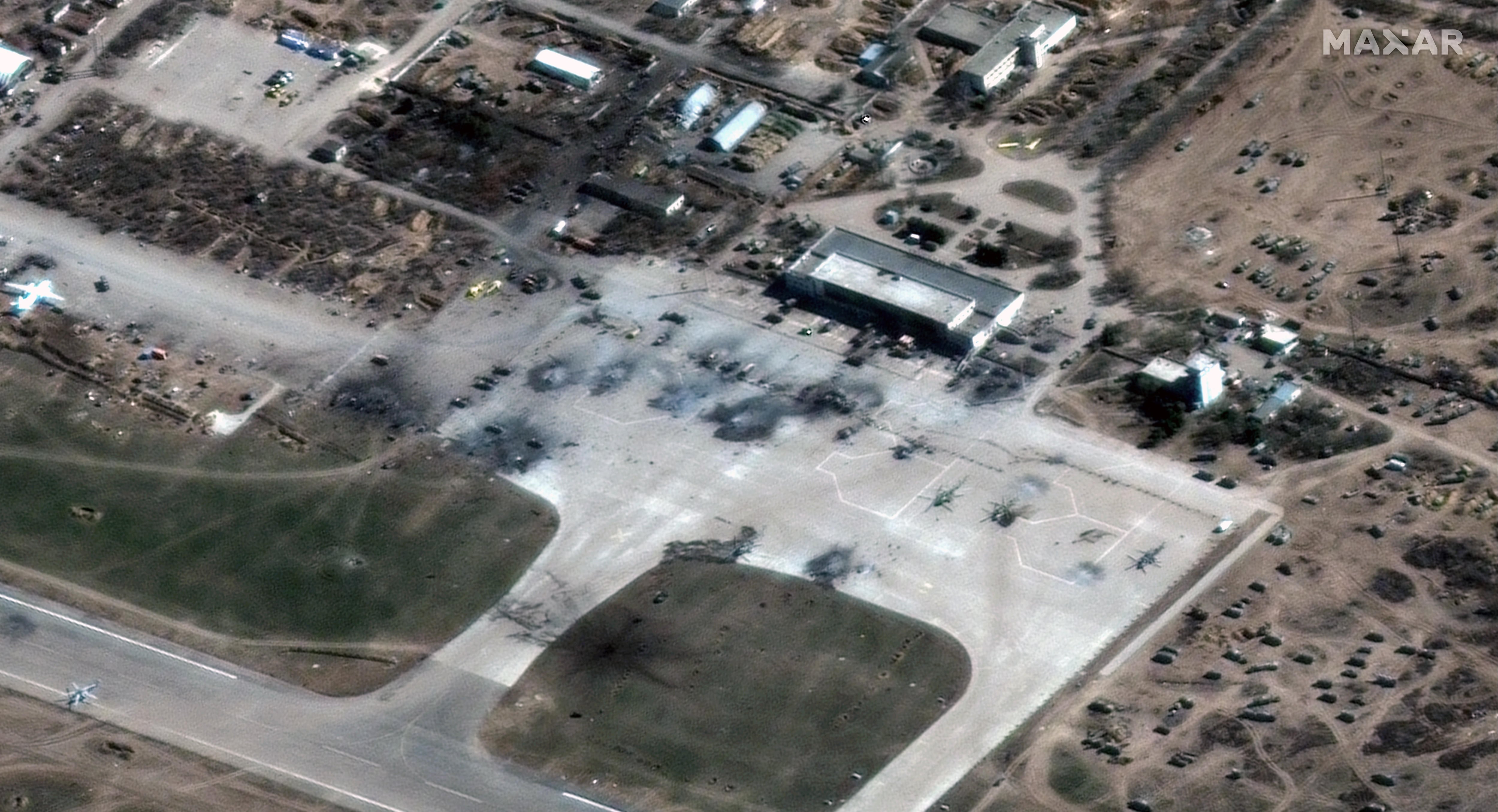
Every night, Ukrainian pilots like Andriy prowl in an aircraft hangar, whose location cannot be disclosed, while they wait and wait until the tension breaks with the cry of an order: “To the air!”.
Andriy rushes onto his Su-27 supersonic aircraft and heads without delay towards the runway, from where he takes off as quickly as possible and does so with such speed that he does not yet know what his mission is that night, although the overall picture is always the same: to fight against a Russian air force that is far superior in number, but has not succeeded control the air zone in the skies of Ukraine.
“I don't do any kind of checking,” said Andriy, a Ukrainian Air Force pilot who, as a condition of granting an interview, was not allowed to give his surname or rank. “I just take off.”
Almost a month after the start of combat, one of the biggest surprises of the war in Ukraine is that Russia has failed to defeat the Ukrainian Air Force. Military analysts expected Russian forces to quickly destroy or paralyze Ukrainian air defenses and military aircraft, but none of that has happened. Instead, air fights are now taking place, such as departures from the movie “Top Gun: Passion and Glory” and which are rare in modern warfare, in the country's skies.
“Every time I fly, it's to engage in real combat,” said Andriy, who is 25 years old and has flown 10 missions in the war. “In every battle with Russian planes, there is no equality. They always have five more planes” in the air.
The success of Ukrainian pilots has helped to protect the military on the ground and prevented more widespread bombing of cities because pilots intercepted some Russian cruise missiles. Ukrainian officials also say that the country's Army has shot down 97 Russian fixed-wing aircraft. That number could not be verified, but the wreckage of Russian fighter jets has crashed into rivers, fields and houses.

Analysts say that the Ukrainian Air Force is operating almost in complete secrecy. Its fighter jets can fly from airstrips located in western Ukraine; airports that have been bombed, but which retain enough runway for takeoffs or landings, or even from motorways. Ukrainian aircraft are widely outnumbered: Russia is believed to make about 200 departures per day, while Ukraine flies five to ten times.
Ukrainian pilots have an advantage. In most parts of the country, Russian planes fly over territory controlled by the Ukrainian Army, which can mobilize anti-aircraft missiles to harass and shoot down aircraft.
“Ukraine has been effective in the sky because we operate on our own land,” said Yuriy Ihnat, a spokesman for the Ukrainian Air Force. “The enemy that flies into our airspace enters the zone of our air defense systems.” His strategy is to tempt Russian planes to fall into the traps of air defense, as Ihnat described.
Dave Deptula, dean of the Mitchell Institute for Aerospace Studies and chief planner of air battles during Operation Desert Storm in Iraq, stated that the impressive performance of Ukrainian pilots had helped to counter their numerical disadvantages. Deptula explained that Ukraine now has close to 55 operational fighter jets, a number that is decreasing due to takedowns and mechanical failures, as Ukrainian pilots are “pushing aircraft to the limit of their capabilities to achieve maximum performance.”
Volodymyr Zelensky, the Ukrainian president, has repeatedly called on Western governments to replenish Ukrainian air force planes and called on NATO to impose a no-fly zone on the country, a step that Western leaders have refused to take. Slovakia and Poland have considered sending MiG-29-type fighter aircraft, which Ukrainian pilots could fly with minimal additional training, but so far no transfers have been made.
“Russian troops have already fired nearly 1000 missiles at Ukraine, countless bombs,” Zelenski said on March 16 in a video speech to the US Congress, calling for more planes. “And they know they exist, and they have them, but they are on land, not in Ukraine, not in the Ukrainian sky.”

Deptula said transferring these planes to Ukraine is essential. “Without refueling,” he said, “they will run out of planes before they run out of pilots.”
Most air combat in Ukraine has been nocturnal, as Russian planes attack in the dark when they are least vulnerable to air defenses. In the air fighting over Ukraine, Andriy said, the Russians have been piloting a variety of modern Sukhoi aircraft, such as the Su-30, Su-34 and Su-35.
“I experienced situations where I was approaching a Russian plane at a distance close enough to aim and shoot,” he said. “I could already detect it, but I was waiting for my missile to set the target, while from the base they warned me that a missile had already been fired at me.”
Andriy said he maneuvered his plane through a series of extreme tilts, dives and ascents to exhaust fuel supplies from the missiles that pursued him. “The time I have to save myself depends on how far the missile was fired at me and what kind of missile it is,” he explained.
However, in an interview on a clear, sunny day, he said: “I can still feel a huge rush of adrenaline in my body because every flight is a fight.”
Andriy graduated from the Kharkiv Air Force School after deciding he wanted to be a pilot as a teenager. “Neither I nor my friends thought we would have to face a real war,” he said. “But that's what happened in the end.”
Andriy has moved his wife to a safer part of Ukraine, but she hasn't left the country, he said. He spends his days weaving homemade camouflage nets for the Ukrainian Army. Andriy never tells his relatives when he will be on duty and only calls them after returning from a night flight.
“I just have to use my skills to win,” Andriy said. “My skills are better than those of the Russians. But on the other hand, many of my friends, and even those with more experience than me, are already dead.”
c.2022 The New York Times Company
Keep reading:
Últimas Noticias
Debanhi Escobar: they secured the motel where she was found lifeless in a cistern

The oldest person in the world died at the age of 119

Macabre find in CDMX: they left a body bagged and tied in a taxi
The eagles of America will face Manchester City in a duel of legends. Here are the details

Why is it good to bring dogs out to know the world when they are puppies




